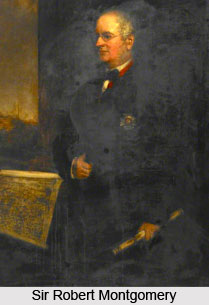 The Punjab Province was among the final regions of the Indian subcontinent that came under the rule of the British Empire in India. After the withdrawal of the British and the Indian independence in the year 1947, the Punjab province was divided between East Punjab that became a part of India and West Punjab that became a part of Pakistan. In India, the territory includes the present day areas of the state of Punjab; Himachal Pradesh, but without the erstwhile Indian princely states that were later merged with the Patiala and East Punjab States Union; Delhi; Haryana and Chandigarh. The Punjab Province of British India was a triangular shaped region of which the Sutlej and the Indus to their convergence formed the either sides. The lower Himalaya hills that were situated between the 2 rivers formed the base but the province under the British rule also incorporated a vast area outside these borders.
The Punjab Province was among the final regions of the Indian subcontinent that came under the rule of the British Empire in India. After the withdrawal of the British and the Indian independence in the year 1947, the Punjab province was divided between East Punjab that became a part of India and West Punjab that became a part of Pakistan. In India, the territory includes the present day areas of the state of Punjab; Himachal Pradesh, but without the erstwhile Indian princely states that were later merged with the Patiala and East Punjab States Union; Delhi; Haryana and Chandigarh. The Punjab Province of British India was a triangular shaped region of which the Sutlej and the Indus to their convergence formed the either sides. The lower Himalaya hills that were situated between the 2 rivers formed the base but the province under the British rule also incorporated a vast area outside these borders.
The region was segregated from Tibet and Kashmir by the Himalayan ranges along the northern border. It was divided from the North West Frontier Province by the Indus River, until it reached the boundary of the district of Dera Ghazi Khan. Rajputana and Sindh laid in the south, where as it were separated from the United Provinces by the rivers Jumna and Tons on the east. The historically significant city of Delhi was also included in the province.
History of Punjab Province
During the battle of Gujarat, the Sikhs were defeated by the British forces on 21 February 1849. The victorious British seized the region of Punjab and it was annexed on 2 April 1849. Thus the territory became an integral part of British India. In the year 1901 the frontier districts, which were beyond the Indus River, were divided from Punjab and a new province was formed, which came to be known as the North West Frontier Province.
Administration of Punjab Province
The British East India Company annexed Punjab in March 1849 and established a Board of Administration for the proper administration and governance of the province. But in February 1853, the Board was abolished and its authority and functions were reassigned to the Chief Commissioner, who was assisted by a Judicial and a Financial Commissioner.
After the territory of Delhi was transferred to Punjab Province from the North Western Provinces, Punjab was developed into a Lieutenant Governorship. On 1st January 1859, Sir John Lawrence, who served as the Chief Commissioner at the time, was appointed as the first Lieutenant Governor. Later he was succeeded in the office by the following members-
* Sir Robert Montgomery (1859)
* Sir Donald McLeod (1865)
* Sir Henry Durand (1870)
* Sir Henry Davies (1871)
* Sir Robert Egerton (1877)
* Sir Charles Aitchison (1882)
* Sir James Lyall (1887)
* Sir Dennis Fitzpatrick (1892)
* Sir Macworth Young (1897)
* Sir Charles Rivaz (1902)
* Sir Denzil Ibbetson (1907)
* Sir Louis Dane (1908)
Later a Chief Court replaced the Judicial Commissioner in the year 1866. The Lieutenant Governor conducted the direct administrative functions of the British Government through the Secretariat, which consisted of a Chief Secretary, a Secretary and 2 Under-Secretaries. They were generally members of the Indian Civil Service. The region directly under the Lieutenant comprised of 29 districts which were assembled under 5 divisions and 43 princely states of India. Each district was under a Deputy Commissioner, who reported to the Commissioner of the division. Every district was sub-divided into 3 to 7 Tahsils and each of the Tahsils was under a Tahsildar, who was assisted by a Naib Tahsildar, who acted as a deputy.



















